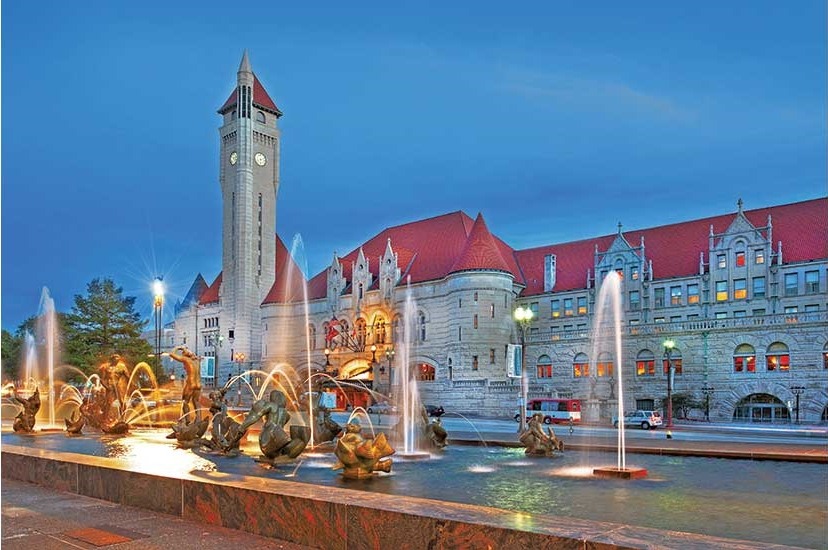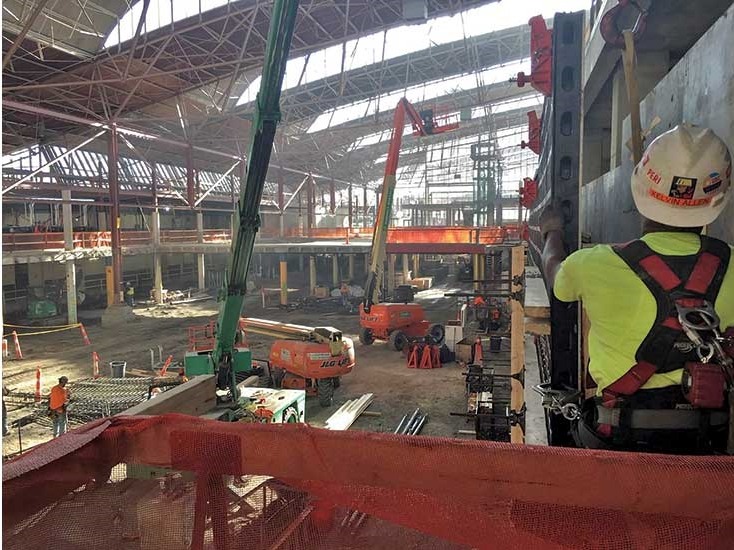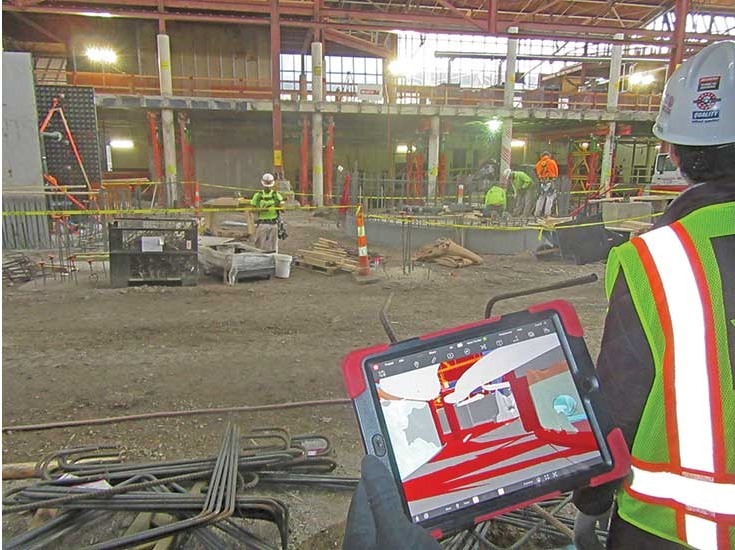Data Sharing Enables McCarthy To Deliver St. Louis Aquarium Design

General Contractor McCarthy Building Cos. turned to new technology tools to help with the delivery of the St. Louis Aquarium, a $45-million, 120,000-sq-ft, two-story facility located inside St. Louis Union Station.
Originally built in 1894, Union Station is one of only 2,500 buildings in the U.S. recognized as a National Historic Landmark. The famous 1948 picture of President Harry S. Truman holding the false “Dewey Defeats Truman” Chicago Daily Tribune newspaper was taken at Union Station, where Missouri native Truman was returning from Washington, D.C.
In 1985, Union Station was renovated as a mall, hotel and food court. Owner Lodging Hospitality Management’s $187-million upgrade, of which the aquarium is just one part, is the most extensive renovation since that time and will add a soda fountain, restaurants and a ropes course in the former shopping mall space, plus a renovated hotel. With only 120,000 sq ft to work with, architect PGAV Destinations had to design the aquarium with the economy of space in mind.
“Between what the existing structure was and our limitations with historical review, there was kind of an east side and a west side that were two different sides of the mall, with the hallway dividing between,” says Andrew Schumacher, architectural designer at PGAV. “So we figured from there, how can we incorporate that into the story of our aquarium? We decided that one side would be all about rivers, with a focus on the Mississippi River, and the other side would be about the ocean.”
PGAV has designed attractions for clients such as the Georgia Aquarium and SeaWorld Parks & Entertainment. In lieu of creating a grand scale to wow visitors at those destinations, the design team decided the St. Louis Aquarium’s design would be a more linear experience with an assortment of tanks of different sizes, a variety of species and different ways for visitors to view the tanks from either going below them or above them—or, in the case of the shark tank, through them.

That design required extensive collaboration with McCarthy on the mechanical systems for fresh and saltwater tanks as well as necessary safety measures for visitors. There are more than three miles of piping systems servicing the life support systems of the various tanks planned for the aquarium, 1,552 sq ft of permanent acrylic panels for viewing and 1,145 cu yd of aquatic concrete (4,000 to 5,000 psi concrete) that all required careful installation on the project. When design began, PGAV only had as-built drawings from the 1800s for some parts of the project.
“We were going to scan Union Station as it was, and then we were going to scan it post demo after all the concrete and horizontal work had come out,” says Alex Belkofer, virtual design and construction director at McCarthy. “After we removed some columns so we could then go back with our design team and compare their design intent with the final conditions, we found some things. There were definitely some differences that PGAV was not aware of pre-demo and post-demo. We had some good working sessions with them back in their office.”
PGAV had a room with four projectors, with McCarthy’s Autodesk Navisworks model on one screen, the post-demolition point-cloud scan on another and PGAV’s Revit model on the third, Belkofer says. On the fourth was data from all three entered into Revizto, a visual, Integrated Collaboration Platform on which McCarthy was a beta tester. Before construction began, both McCarthy and PGAV went back and forth on all the design and modeling data, massaging any changes needed due to issues such as floors being planned for the elevation of the existing hotel and not the post-demolition level. Those were all incorporated into the final Navisworks model, but once construction began, Revizto was the tool used to view all of the project’s planned and existing conditions throughout construction.
Revizto is a real-time software platform that allowed the Navisworks construction model to be viewed by anyone on-site with an iPad or smartphone. It is linked to McCarthy’s project management system, Procore, so all project personnel could view the model against real conditions using Revizto’s viewer in the field on the same plane. The model shows up as an overlay on the tablet’s screen, and the tablet’s camera shows the existing conditions. Field workers could flag an issue such as incorrect installation and create a Revizto “stamp,” then push it to Procore where it becomes a documented condition marked for action, whether that’s a change order, RFI or other action. Even subcontractors using their own design or shop drawing programs can share that information via Revizto with the rest of the team.

“Whatever proprietary software anybody else is using, it’s all connected,” Belkofer says. “That’s what Revizto is allowing us to do.”
In addition to that, McCarthy made its own concrete placement drawings so that the self-performed placements were more easily done by field personnel. The placement drawings were brought into Revizto and shared with all.
“It’s not a data silo, it’s not in a separate box, it’s all in the same environment,” Belkofer says. “We got it down to the right cubic yardage, so these drawings have really become kind of a holistic way for us to place it, so we can order the material we need and put it in right the first time.”
With a fairly fast schedule and very little room on the 120,000 sq ft of the project, McCarthy needed to ensure precision while also dealing with limited access to some areas due to historic construction restraints. Some parts of the structure McCarthy simply could not touch because they were historic. Some spaces that had to house piping had only 2 ft of access space. There are freshwater tanks for the river part of the aquarium for animals such as otters and piranha, along with saltwater tanks for ocean creatures, so there had to be separate life support systems for separate tanks.
“A lot of what we dealt with—and this was in the model before construction—was how do you get this all consolidated?” says Bryan Meyer, McCarthy’s project director. “We did a lot of sleeving and fitting the life support systems into tight spaces.”
Meyer says McCarthy was able to coordinate construction in the tight spaces by planning ahead, using smaller equipment and having piping assemblies custom-built for the space and delivered ready to install. Having all the accurate model information at everyone’s fingertips during construction also helped with placing the large acrylic pieces for the tanks once their concrete shapes had been formed. Alejandro (Cruz) Esteban, a project engineer for McCarthy, says the subcontractors he’s working with on the project loved having all their information accessible and in one platform in the field.
The St. Louis Aquarium opened in December and features more than 13,000 animals and 1 million gallons of water. Construction began in November 2017.
